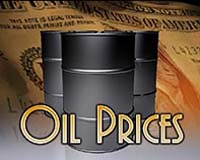 |
New Orleans, Louisiana (AFP) April 27, 2010 Engineers raced Tuesday to build a giant containment dome in case robotic submarines fail to stop oil gushing into the sea from a sunken rig in the Gulf of Mexico. British energy giant BP is operating four robotic submarines some 1,500 meters (5,000 feet) down on the seabed to try to activate a blowout preventer that can cap the oil well. But two days of efforts have yielded no progress and placing a giant dome over the leak is now considered the best solution to ward off the threat of an environmental disaster from the huge slick developing off the Louisiana coast. "It's a dome that would be placed over the leak and instead of the oil leaking into the water column it would leak into this dome structure," US coast guard spokesman Prentice Danner told AFP. "They started working on the fabrication of this dome structure fairly recently and its estimated it will take two to four weeks to build," he said. "This is the first time this has ever been done. This idea didn't exist until now. It has never been fabricated before." The Deepwater Horizon rig, which BP leases from Houston-based contractor Transocean, went down last Thursday 200 kilometers (130 miles) southeast of New Orleans, still burning off crude two days after an explosion that left 11 workers missing presumed dead. The spill created a massive slick that can be seen from space and, if the winds change, could threaten Louisiana's ecologically fragile wetlands -- a paradise for rare waterfowl and other wildlife -- within days. An overflight on Monday afternoon showed a "600-mile (965 kilometer) circumference rainbow sheen with areas of emulsified crude approximately 36 miles offshore the coast of Louisiana," said a statement from the disaster's joint information center. BP has sent a flotilla of 49 skimmers, tugs, barges, and recovery boats to mop up the spill and poured 29,140 gallons of chemical product into the sea to disperse the oil. A special Transocean rig was expected to arrive later Tuesday to start drilling two relief wells that would cut off the flow of oil. BP officials have said the relief wells will take up to three months to drill and with oil gushing into the Gulf of Mexico at the rate of 42,000 gallons a day, the dome is seen as a better interim bet. "The dome would capture or gather the oil and allow it to be pumped out of that dome structure," explained Danner. "If you could picture a half dome on top of the leak and the oil collects inside of this dome and is pumped out from there, that is the idea behind it." The exact dimensions and design of the dome were still being worked out, but officials said it would be similar to welded steel containment structures called cofferdams that are already used in oil rig construction. Meanwhile, BP chief executive Tony Hayward acknowledged that strong results Tuesday boosted by higher oil prices had been overshadowed by the "tragic accident" but expressed confidence an environmental disaster would be averted. Improved weather conditions, "combined with the light, thin oil we are dealing with, has further increased our confidence that we can tackle this spill offshore," Hayward said. According to National Oceanic and Atmospheric Administration (NOAA) experts participating in the spill response, the slick is "very thin" and consists of "97 percent sheen." Communities in southern US states along the Gulf of Mexico were nonetheless bracing for the possibility of polluted beaches and fisheries that are crucial to the region's economy. "The spill will start impacting the crustaceans, the oysters beds and the fish populations," warned veteran Louisiana environmentalist Wilma Subra, adding that 40 percent of the seafood consumed in the US comes from the state. Subra urged anyone spotting oily birds or mammals to immediately notify state authorities.
Share This Article With Planet Earth
Related Links Powering The World in the 21st Century at Energy-Daily.com
 Asian demand likely to keep oil prices up
Asian demand likely to keep oil prices upLondon (UPI) Apr 27, 2010 Industrial oil-consuming countries should expect to keep paying higher prices for crude because their slow recovery and low demand is being offset by rising demand in Asia, the London Center for Global Energy Studies said Tuesday. The think tank said recent spikes in oil prices showed that neither the weakness in Western countries' recovery nor forecasts by the Organization of Petroleum ... read more |
|
| The content herein, unless otherwise known to be public domain, are Copyright 1995-2010 - SpaceDaily. AFP and UPI Wire Stories are copyright Agence France-Presse and United Press International. ESA Portal Reports are copyright European Space Agency. All NASA sourced material is public domain. Additional copyrights may apply in whole or part to other bona fide parties. Advertising does not imply endorsement,agreement or approval of any opinions, statements or information provided by SpaceDaily on any Web page published or hosted by SpaceDaily. Privacy Statement |